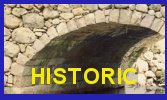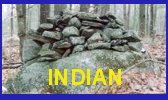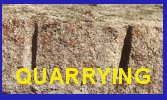



 |
 |
 |
 |
|
|
|
|
|
Titicut Site: Another Site with Similar Features to Caddy Park By Mary Gage The Caddy Park site in Quincy, MA has a single feature a deposit of Terminal Archaic – Early Woodland artifacts spread out over a three foot square area with three distinct heavy deposits of red ochre. Approximately twenty miles south in Bridgewater, MA located on the Taunton River is the Titicut site. Among its 241 hearths and pits are five features with noticeable deposits of red ochre and artifacts. M. Robbins who conducted excavations labeled these features “Red Paint Deposits”. Of the five Robbins excavated two of the features, the other three had been excavated earlier before he took over. The features are in what is called the yellow sand horizon between the surface horizon with Late Woodland period features and lower horizon with circa 5000 year old features from the Late Archaic. The two features excavated by Robbins are numbered #116 and #179. #179 had a full grooved ax with a date range of Middle to Terminal Archaic. #116 had a whaletail pendant that is dated to the Terminal Archaic. Four of the Red Paint Deposits numbers 112, 114, 116, and 131 were clustered in an area near the base of the esker on south end of site. Feature #179 was in a separate place but also on south end of site. Hearths and pits were also in same area. Feature #116 most closely resembles the Caddy Park feature. It was a pit dug mostly into the white sand layer. The pit was filled with “a dense, black, finely powdered charcoal.” Within the charcoal were three separate deposits of bright red ochre. On one side of pit there was a plummet in a small deposit of red ochre. On other side of pit a “polished bipenate form identified as a Whaletail pendant and also a fragment of graphite” placed in another deposit of red ochre. The third deposit of red ochre did not contain artifacts. Feature #179 was constructed of two parts a hearth and a niche-like feature buried beneath. The base of the niche feature was located on the white sand. Hearth was constructed of a circular ring of large oval pebbles. The ring was a complete circle unlike other hearths at lower levels with an open side. Contents of hearth “consisted of dark stained soil, charcoal in small lumps, a few broken stones and a small amount of calcined bone fragments.” Floor of hearth had a single, large, flat stone a quarter the diameter of stone circle (measured 24 by 28 cm.). Directly underneath the flat stone was a second flat stone a little smaller than the hearth’s flat stone. The sand around the two flat stones was slightly discolored by the charcoal from the hearth. The underneath stone was raised up on three elongated stones placed on edge that formed a three sided box. “A slight trace of red paint at the open end indicated the presence of a ceremonial deposit within.” The underside of flat stone forming the box was coated with a “thin smear of graphite” and inscribed with figures. An elongated figure with a forked tongue and cross hatching across its body represents a snake. Below the snake’s body is a circle filled with more circles. It is crudely carved. Bisecting the circle are elongated designs that look like boats. They are wide in the middle and pointed on the ends. The hearth above is a complete circle of stones. Fire burns with tongues of flames jutting out at all angles from a hearth. This figure appears to represent the fire placed above this feature. Beside the fire design is a crude rendition of a person. Inside the niche-like feature was a full grooved ax, a clumsy plummet and a scraper-like tool of white quartz. All three artifacts were placed on “clean white sand” and had red ochre powder poured over them. Features 112, 114, and 131 also had red ochre deposits and artifacts. Reports on these were not available to M. Robbins. The features contained projectile points, drill and stemless knife. “To this list of red paint deposits must also be added two small stones with small oval scrapers of sandstone, also stained red, were associated with one of the larger stones (Fig. 6 #15 & 16)”. [Robbins associated a red paint mortar with the two oval scrapers #15 & #16 in his illustration] Discussion Features #179 and #116 at Titicut site have some common factors. Each feature has the colors black and red. In #116 deposits of bright red ochre were placed within dense fine powdered dark colored charcoal. In #179 the dark colored graphite was smeared over the petroglyph and red ochre was poured over the artifacts. Each feature had three artifacts. Petroglyph had three figures. Niche enclosing artifacts had three sides. Both features were placed on white sand layer. Although #116 is a pit feature and #179 is a hearth and buried niche feature they share similar characteristics. The Caddy Park site follows a similar pattern. It was a single buried feature with three separate deposits of red ochre each with a group of artifacts. The common factors are (1) red ochre, (2) “three” symbolism, (3) buried feature. The two sites share more than buried features with three parts. In feature #116 there was a whaletail pendant, plummet and graphite stone. In #179 there was a plummet, ax and scraper. The roof stone of niche had the image of a snake, fire and person carved into it. In the Caddy Park feature there was a broken whaletail pendant, numerous plummets along with knives, projectile points and woodworking tools. A gouge had the image of a whale sculptured on to it. The fact each site had a feature with tools and animal images buried with red ochre suggests this was a cultural offering trait. Robbins immediately identified the hearth and niche feature as ceremonial. Of the 241 hearths and pits, some could not be discerned as being one or the other because of disturbance, thirty one had from one to twenty six artifacts. The hearth with twenty six artifacts included a grooved ax, celt, gouge, stemmed knives, scrapers, small stem points, and one crude tool. This was not the only hearth with a grooved ax. The ax, gouge and celt were tools that took a long length of time to make they were not the casual quick projectile point. The high ratio of hearths and pits with tools suggests the items were offerings. The area with the clustered Red Paint Deposits indicates a ceremonial area. It has hearths and pits contemporary with the deposits. In Roger Williams’ A Key into the Language of America: or An help to the Language of the Natives in that part of America, called New-England. he wrote the Native Americans had many Gods [spirits] which included East, West, South, North, Woman’s, Children’s, House, Sun, Moon, Sea, and Fire.(pp. 125) This was partial list for he said there were thirty seven Gods. Within his religious [ceremonial] section he includes feasts and dances. (pp. 126) Reasons given to hold a feast or dance include sickness, drought, war, famine, after hunting, after harvest, and a winter time gathering similar to our Christmas [or New Year]. Native American cultural traits also include Underworld a place under the ground and beneath water, Upperworld the sky and Middleworld the earth’s surface. These people are also well known for making offerings. Robbins when he excavated feature #179 with hearth and niche knew as soon as he saw the red ochre at open end of niche the complete two part feature was ceremonial. He was also aware the hearths and pits with artifacts stood out as abnormal and in so doing drew attention to the features. Caddy Park site adds one more link to what Robbins discovered. Interpretation To attempt any interpretation it must be done from a Native American’s cultural perspective. First, each one of these features was placed underground in what is called the Underworld. This would be perfectly appropriate since fish represented by plummets on the river at Titicut, and whale, represented by the sculptured gouge at Caddy Park are creatures of the Underworld. At Titicut there is the snake a creature that lives under the earth’s surface, again an Underworld creature. The niche appears to represent the snake’s burrow underground complete with an opening sprinkled with red ochre. Above was the fire with Fire Spirit contained within a complete circle of stone, created by a person, probably a shaman. The fire and people spirits represented along with snake spirit on the petroglyph were placed in the Underworld from whence the people’s food sources the fish in the river come from. The three figures placed on the same petroglyph suggest the snake spirit carried a message to the Underworld from the people. Snake had the opening at end of niche that gave the spirit access to the greater Underworld realm. At each site a pendant of a whale’s tail was buried. The whale’s tail symbol may have also represented a fish’s tail. It was in the form of personal person’s ornament hence the spirit of the person was united with the spirit of the animal. This is a well known trait of shamans. Each of these two sites is near the water’s edge. There is a strong possibly each site was a place where the Native American’s gathered during Late Archaic to Early Woodland times to make an offering to the animals they harvested for their food. At Titicut they held feasts at the gatherings. References Robbins, Maurice Mahlstedt, Thomas and Margo M. Davis Williams, Roger |
|
See Also - Some Observations on Caddy Park |
|||||||||||
 |
|||||||||||
 |
|||||||||||
|
|
|||||||||||
|
|
|||||||||||
 |
|||||||||||